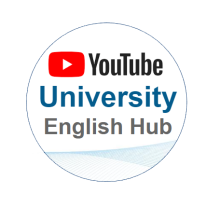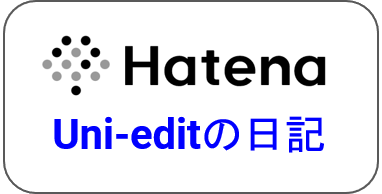難易度:上級
あなたはこれまで、「過去形は過去に起こった事象を示すのに対し、現在完了形は過去に起きて、現在にまで継続している事象を示す」と何度教えられてきたでしょうか。けれども、研究論文の緒言ではそれらをどう使い分けますか。過去の知見のすべては、自分の現在の研究に関連していませんか。
混乱しますね。実は校正チームも迷います。簡単なガイドは次のとおりです。
現在完了
現在完了形はしばしば、その分野の動向についての諸説を示すために使われます。”recently”や”long considered”のような時を表す形容詞や、”gather attention”や”draw criticism”のような語句は、多くの場合に現在完了時制を連想させます。それは、これらの事象が時系列の特定のポイントで起きたというよりは、そういう動向を示しているからです。
(正)The contribution of agricultural production to greenhouse gas has long been debated.
(訳:農業生産が温室効果ガスに寄与していることは長く論議されてきた。)
(正)Recently, the idea that some crops leave larger CO2 footprints than others has gathered attention.
(訳:近年では、一部の作物が他の作物より多くのCO2を産生するという意見が注目を集めている。)
(正)Some researchers have argued that crops that require heavy use of nitrogenous fertilizers, such as potatoes, leave a larger CO2 footprint than crops that require less, such as legumes.
(訳:一部の研究者らは、ジャガイモのように窒素肥料を多量に必要とする作物は、豆類のようにそれほど窒素肥料を必要としない作物より多くのCO2を産生すると主張してきた。)
現在完了形は、年月日や年代などの「時系列の特定のポイント」を括弧に入れて示す場合にも使用します。というのは、括弧内の年月日は文法的にその文の一部ではないからです。
(正)Some researchers have argued that crops that require heavy use of nitrogenous fertilizers, such as potatoes, leave a larger CO2 footprint than crops that require less, such as legumes (2002).
(訳:一部の研究者らは、ジャガイモのように窒素肥料を多量に必要とする作物は、豆類のようにそれほど窒素肥料を必要としない作物より多くのCO2を産生すると主張してきた(2002)。)
単純過去
ある試験を実施した年代を文の本体に示すときは、過去形でなければなりません。実際に、現在完了形では不自然に感じます。
(正) Smith et al. conducted a 2-year field experiment in 2009 and 2010 in rice paddies to learn about the connection between rice production and greenhouse gases emissions.
(訳:Smithらは、米の生産と温室効果ガス排出との関係について明らかにするために、2009年および2010年に2年間の水田での野外試験を実施した。)
(不自然)Smith et al. have conducted a 2-year field experiment in 2009 and 2010 in rice paddies to learn about the connection between rice production and greenhouse gas emissions.
「緒言」で、特定の著者らの名前を引用するとき、通常は過去形を使用します。
(正)Smith et al. conducted a 2-year field experiment in rice paddies to learn about the connection between rice production and greenhouse gas emissions.
(訳:Smithらは、米生産と温室効果ガス排出との関係について明らかにするために、2009年および2010年に2年間の水田での野外試験を実施した。)
(正)Bouwmann et al. (2002) argued that crops that require heavy use of nitrogenous fertilizers, such as potatoes, leave a larger CO2 footprint than crops that require less, such as legumes.
(訳:Bouwmannら(2002)は、ジャガイモのように窒素肥料を多量に必要とする作物は、豆類のようにそれほど窒素肥料を必要としない作物より多くのCO2を産生すると主張した。)
説明:上記の現在完了の説明で、"Bouwmann et al."が"Some researchers"であったときはその文が現在完了形であったことに注意してください。これは「一部の研究者ら」は特定されていないのに対し、「Bouwmannら」は特定されているからです。
同じ原則が著者のあなたにも当てはまります。「我々」または「本研究の著者ら」は特定の研究者らであるので、自分の過去の試験の知見を報告するには過去形を用いなければなりません。
(正)We previously conducted an experiment to learn about the carbon footprints for various crops grown in Taoyuan County (2011).
(訳:我々は過去に、Taoyuan Countyで栽培されるさまざまな作物のカーボンフットプリント(CO2排出量)を明らかにするために試験を実施した。(2011) )
否定文
現在完了はその文法的時制が否定文であるとき(すなわち、"not"が使われるとき)に多くみられます。これは特に、"investigated"、"determined"、"revealed"などのような動詞が使われる場合に当てはまります。
(正)Whether reducing potato crops is a viable strategy to reduce greenhouse gas emissions has not yet been determined.
(訳:ジャガイモの収穫を減らすことが温室効果ガス排出量を削減する方策として実現性があるかどうかは、まだ判定されていない。)
もしあることを一度も調査していない場合、それを調査しなかった特定の時はないと考えます。" A polar bear was born in the zoo yesterday "(シロクマが昨日、動物園で生まれた)と" A black polar bear has never been found "(黒毛のシロクマは見つかっていない)とを比較してください。
ということで、繰り返しますが、特定の年月日または著者らが文に書き込まれる場合は単純過去が適切です。
(正)Smith et al. conducted a 2-year field experiment in rice paddies to learn about the connection between rice production and greenhouse gas emissions. However, they did not consider the effects of nitrogenous fertilizers.
(訳:Smithらは、米生産と温室効果ガス排出との関係について明らかにするために、2009年から2010年に2年間の水田での野外試験を実施した。しかし、Smithらは窒素肥料の影響を考慮しなかった。)
要約すれば次のとおりです。
-
特定の年月日や著者名を文に書かない場合は、現在完了形を使用します。
-
動向を示すか、結論がないことを示すには、現在完了形を使用します。
-
その他の場合は、過去形を使用します。
アイコンをクリックして、ダウンロードする: Introduction(緒言)の現在完了形と過去形
Introduction(緒言)の現在完了形と過去形
Uni-edit English Writing Tip 006: Present Perfect Tense and Past Tense in your Introduction
Difficulty: Advanced
How many times have you been told the following: “the past tense denotes an event that happened in the past, while the present perfect tense denotes an event that happened in the past, which has present consequences.”? But, what about the Introduction section of research papers? Aren’t all of the past findings relevant to my present research?
Confused? So are we! Here is an easy guide.
Present perfect
Present perfect is often used for broad statements about trends in the field. Temporal adjectives like “recently” and “long considered” and words like “gather attention” and “draw criticism” often suggest the present perfect tense. This is because these events did not occur at specific point in time: rather, they are trends.
Correct: The contribution of agricultural production to greenhouse gas has long been debated.
Correct: Recently, the idea that some crops leave larger CO2 footprints than others has gathered attention.
Correct: Some researchers have argued that crops that require heavy use of nitrogenous fertilizers, such as potatoes, leave a larger CO2 footprint than crops that require less, such as legumes.
This usage of present perfect includes cases where the date—a specific point in time—is expressed in parentheses: because the date is not a grammatical part of the sentence.
Correct: Some researchers have argued that crops that require heavy use of nitrogenous fertilizers, such as potatoes, leave a larger CO2 footprint than crops that require less, such as legumes (2002).
Simple past
When the date of a study is expressed in the body of the sentence, past tense is necessary. In fact, present perfect sounds unnatural.
Correct: Smith et al. conducted a 2-year field experiment in 2009 and 2010 in rice paddies to learn about the connection between rice production and greenhouse gases emissions.
Unnatural: Smith et al. have conducted a 2-year field experiment in 2009 and 2010 in rice paddies to learn about the connection between rice production and greenhouse gas emissions.
In the Introduction Section, past tense usually applies when the specific authors are referenced by name.
Correct: Smith et al. conducted a 2-year field experiment in rice paddies to learn about the connection between rice production and greenhouse gas emissions.
Correct: Bouwmann et al. (2002) argued that crops that require heavy use of nitrogenous fertilizers, such as potatoes, leave a larger CO2 footprint than crops that require less, such as legumes.
Explanation: Notice that when “Bouwmann et al.” was “Some researchers” in the Present perfect explanation above, it was present perfect. This is because “some researchers” is not specific, whereas “Bouwmann et al.” is specific.
The same principles apply to you: “we” or “the authors of the present study” are specific researchers, so past tense should be used to report findings of your past studies.
Correct: We previously conducted an experiment to learn about the carbon footprints for various crops grown in Taoyuan County (2011).
Negative sentences
The present perfect is more common when the grammatical tense is negative (i.e. when “not” is used.) This is especially true with verbs like “investigated”, “determined”, “revealed”, etc.
Correct: Whether reducing potato crops is a viable strategy to reduce greenhouse gas emissions has not yet been determined.
Consider that if something has never been investigated, there is no specific time when it was not investigated: compare “A polar bear was born in the zoo yesterday” with “A black polar bear has never been found”.
That being said, again, the simple past is more appropriate if the specific date or authors are written in the sentence.
Correct: Smith et al. conducted a 2-year field experiment in rice paddies to learn about the connection between rice production and greenhouse gas emissions. However, they did not consider the effects of nitrogenous fertilizers.
To sum up:
- Use present perfect when the specific date or authors are not written in the sentence.
- Use present perfect to denote trends or lack of conclusions.
- Use past tense otherwise.
Download Tip Here:  Present Perfect Tense and Past Tense in your Introduction
Present Perfect Tense and Past Tense in your Introduction
END OF TIP



